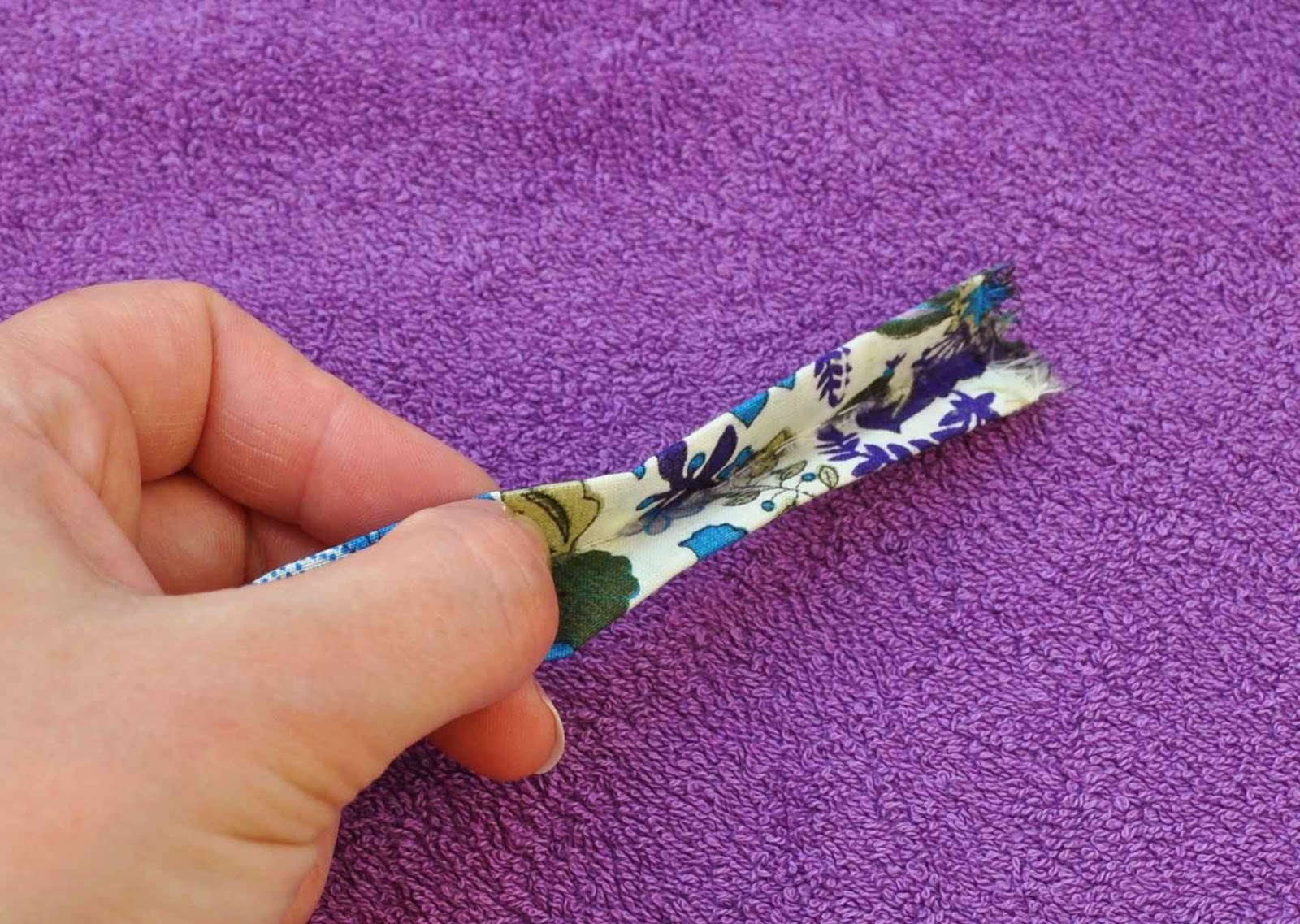When I took apart my old bathrobe to dye, the places where the pockets have been were still very visible. Also, after dying, it turned out that the elbow of the right sleeve was worn out more than the rest of the fabric, and it dyed unevenly. Because of all this, I had to abandon the idea of making matching washcloths. But there was enough fabric to make a bathrobe for my younger daughter's teddy bear. She has been asking me to make the whole wardrobe for him, and made dotty pants herself to start the process:
The pattern is mostly rectangles: one wide for the back, two for the front, two for the sleeves. The curved lines are for the back of the hood, the neckline and the bottom of the pocket.
I also made a belt out of 4 cm wide strip of fabric. I've made the same way as bias binding is made: folded the strip lengthwise in half, then folded in the long edges. To make the ends neat, I had to stitch over a bump, made out of 8 layers of fabric. I learned a trick to do that: either hammer the bump or flatten it with pliers. One should really wrap the bump in unwanted cloth first not to damage the garment one is making, but the towelling fabric is very forgiving, so I just squeezed it as it was:
The same can be done anywhere where one has to stitch over a bump of seam allowances:
And here is the finished bathrobe:
The pattern is mostly rectangles: one wide for the back, two for the front, two for the sleeves. The curved lines are for the back of the hood, the neckline and the bottom of the pocket.
I also made a belt out of 4 cm wide strip of fabric. I've made the same way as bias binding is made: folded the strip lengthwise in half, then folded in the long edges. To make the ends neat, I had to stitch over a bump, made out of 8 layers of fabric. I learned a trick to do that: either hammer the bump or flatten it with pliers. One should really wrap the bump in unwanted cloth first not to damage the garment one is making, but the towelling fabric is very forgiving, so I just squeezed it as it was:
The same can be done anywhere where one has to stitch over a bump of seam allowances:
And here is the finished bathrobe:





















